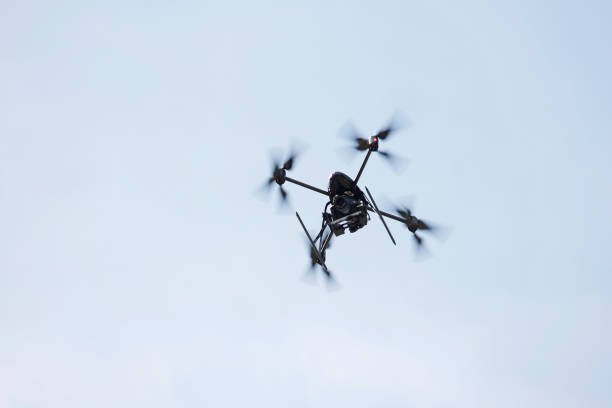Drone Racing: The Future of Extreme Sports

A flying device carrying a camera above the circuit. Formula One World Championship, Rd 5, Spanish Grand Prix, Preparations, Barcelona, Spain, Thursday 19 May 2011. BEST IMAGE (Photo by Daniel Kalisz/Sutton Images)
Drone racing has rapidly emerged as a thrilling fusion of technology and athleticism, captivating audiences worldwide. Pilots navigate high-speed drones through intricate courses, demonstrating remarkable reflexes and precision. The ascent of this sport has been meteoric, with some enthusiasts claiming that it has gained popularity faster than any other sport in history. ENGLISH ONLINE.
The Evolution of Drone Racing
Drone racing’s beginnings can be traced back to informal gatherings of hobbyists experimenting with first-person view (FPV) technology. Pilots operate drones with cameras, transmitting live video feeds to VR-like headgear for an immersive flight experience. This innovation has made drone racing a spectator sport, allowing audiences to see the pilot’s perspective.
In 2015, organized competitions started to emerge, with events like the U.S. National Drone Racing Championships attracting significant attention. The sport became more professional by establishing leagues like DRL, which introduced standardized drones and courses to guarantee fair competition.
Technological Advancements Driving the Sport
Advances in drone technology are closely connected to the growth of drone racing. High-performance drones can now perform complex maneuvers with agility and accelerate from 0 to 80 mph in under a second. The DRL’s proprietary drones include the Racer3, which has 16 pounds of thrust and a top speed of approximately 90 mph.
Furthermore, developing advanced radio systems has made drone control more reliable, even in challenging environments. Companies like Performance Drone Works (PDW), founded by former DRL engineers, have developed advanced anti-jam radio technology originally designed for racing.
The Competitive Landscape
Major events have attracted top pilots from all over the world, making drone racing a global phenomenon. Annual highlights include competitions like the FAI Drone Racing World Cup and the MultiGP Championships, which offer substantial prize pools and international recognition. The 2019 FAI World Drone Racing Championship in China, which saw South Korean pilot Changhyeon Kang win, underlined the sport’s global appeal.
Accessibility and Community Engagement
Accessibility is one of the most compelling aspects of drone racing. Aspiring pilots can begin with affordable equipment and gradually progress to more advanced setups. Beginners can practice their drone flight skills virtually before transitioning to real-world flying with the availability of realistic drone flight simulators, like the DRL Simulator. Collaboration and innovation are fostered in drone racing due to its community-driven nature. Sharing designs, techniques, and experiences contributes to the dynamic evolution of sports enthusiasts. Pilots can compete and learn through local clubs and events, expanding the sport’s reach.
The community-driven nature of drone racing cultivates collaboration and innovation. Enthusiasts share designs, techniques, and experiences, contributing to the sport’s dynamic evolution. Local clubs and events enhance the sport’s reach by providing pilots with platforms to compete and learn.
The Future of Drone Racing
The future of drone racing appears bright as technology advances. Innovations in artificial intelligence and robotics may introduce new dimensions to the sport, potentially allowing for more complex courses and autonomous racing categories. Drone racing’s integration into mainstream media and eSports platforms is expected to increase its visibility and attract a larger audience. ARXIV In closing, drone racing is a fusion of cutting-edge technology and competitive sport, providing a thrilling experience for both pilots and spectators. Drone racing is not just a passing trend but a significant player in the future landscape of extreme sports, as indicated by its rapid growth and increasing global recognition.








